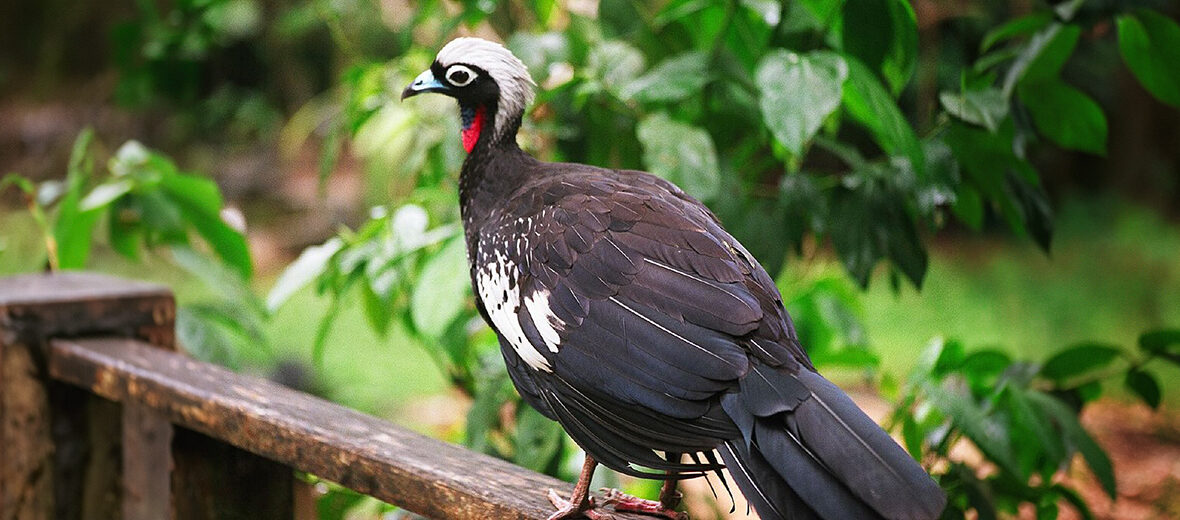
The black-fronted piping guan, aka jacutinga (Brazilian Portuguese), calls Argentina, Brazil, and Paraguay their home. They are members of the chachalaca, guan, and curassow family (Cracidae). These avians face the threats of habitat loss and destruction at the hands of farming, ranching, logging, and wood harvesting; hunting; trapping; dams; and general water management practices. The IUCN lists these birds as Endangered, and their populations are decreasing.
First the Stats…
Scientific name: Pipile jacutinga
Weight: Up to 3.1 lbs.
Length: Up to 2.43 feet
Wingspan: Up to 3+ feet
Lifespan: Up to 20+ years
Now on to the Facts!
1.) In 2018 there were, at most, an estimated 7,000 wild individuals. Currently, that estimate is a mere 1,500!
2.) They are 1 of 4 species in the genus Pipile.
3.) The black-fronted piping guan is currently listed as being monotypic (contains only 1 immediately subordinate taxon).
4.) These birds prefer coastal, evergreen, and gallery forest habitats.
5.) While once ranging to elevations of up to 6,070 feet, they now only inhabit elevations from sea level up to 3,300 feet.
But wait, there’s more on the black-fronted piping guan!
6.) Even though they aren’t migratory, they do engage in altitudinal and seasonal movements, based likely on temperature and/or food availability.
7.) They can be found foraging in pairs, in groups of up to 11, or solitary.
Did you know…?
Vocalizations consist of thin, rising whistles that are likened to those of other guans. Their alarm call produces a metallic sounding call.
8.) Even though their primary diet of choice is up to 41 species of fruit, they will also feast on buds, seeds, insects, and snails.
9.) Breeding season lasts from August – December.
10.) Nests are comprised of a platform made from stems and twigs placed in the fork of a tree.
But wait, there’s still more on the black-fronted piping guan!
11.) Females lay up to 4 eggs each season.
12.) Eggs hatch in up to 28 days.
13.) While the female incubates the eggs, the male searches for food to return to the female.
14.) Their primary predators are coyotes, foxes, wolves, and hawks.
Now a Short Black-Fronted Piping Guan Video!
Be sure to share & comment below! Also, check out the Critter Science YouTube channel. Videos added regularly!
Want to suggest a critter for me to write about? Let me know here.
Some source material acquired from: Wikipedia & IUCN
Photo credit: Bruno Girin




